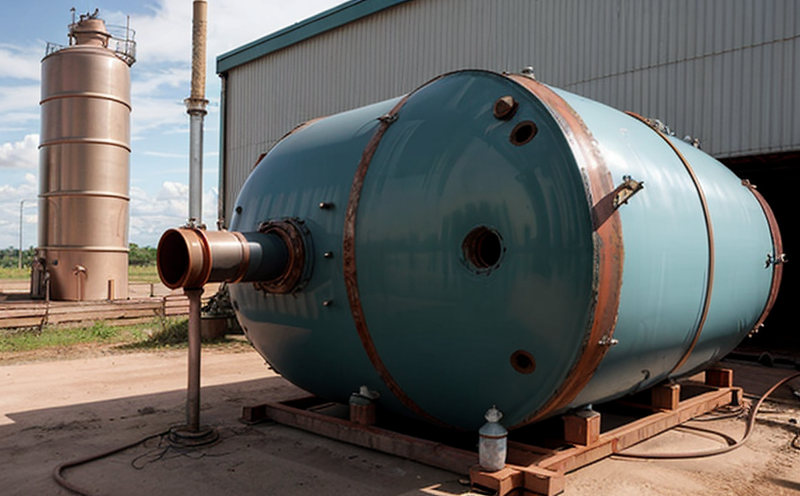Pressure vessel corrosion inspection
The integrity of pressure vessels and storage tanks is critical in sectors such as petrochemicals, pharmaceuticals, oil and gas, and power generation. These structures are designed to contain high-pressure fluids or gases that can be highly corrosive if not properly inspected. Corrosion can lead to significant degradation over time, resulting in potential safety hazards, costly downtime, and regulatory non-compliance.
Pressure vessel corrosion inspection is a specialized service that ensures the structural integrity of these vessels by identifying and quantifying areas where corrosion may be occurring. This process involves detailed visual inspections, non-destructive testing (NDT), and sometimes destructive sampling to assess the extent of corrosion damage.
The first step in this inspection process is a thorough visual examination using ultrasonic probes, eddy current instruments, and magnetic particle testing equipment. These tools help detect surface and subsurface defects that may not be visible to the naked eye. In some cases, advanced techniques like phased array ultrasonics or radiography might also be employed.
Following the initial assessment, samples are often taken for laboratory analysis under controlled conditions. This allows us to determine the nature of the corrosion—whether it is pitting, general decay, or other forms—and assess its depth and spread. The data collected during these inspections is then compared against international standards such as ASME (American Society of Mechanical Engineers), ISO, EN, and ASTM codes.
Once all the data has been compiled, a detailed report is generated outlining the findings along with recommendations for any necessary repairs or maintenance actions. Our reports are comprehensive and include not only raw inspection results but also an analysis of potential risks and mitigation strategies based on best practices in the industry.
Why It Matters
The integrity of pressure vessels and storage tanks is paramount to prevent catastrophic failures that could result in loss of life, property damage, environmental contamination, and significant financial losses. Regular inspections play a crucial role in maintaining the safety and reliability of these systems.
- Ensures compliance with regulatory requirements such as ASME code Section VIII.
- Prevents costly downtime by identifying issues early before they escalate into major problems.
- Reduces the risk of accidents that could harm workers and the public.
- Aids in optimizing maintenance schedules for maximum efficiency with minimal disruption to operations.
By conducting regular corrosion inspections, companies can extend the useful life of their pressure vessels, thereby reducing replacement costs and enhancing overall operational safety. This proactive approach not only saves money but also contributes positively to corporate social responsibility by ensuring safer working environments and more sustainable practices.
Competitive Advantage and Market Impact
- Offers unparalleled expertise in detecting subtle signs of corrosion, enabling early intervention before failures occur.
- Provides detailed reports that serve as valuable resources for decision-making regarding vessel modifications or replacements.
- Promotes a culture of safety and compliance within organizations, enhancing their reputation among clients and stakeholders.
- Aids in maintaining operational efficiency by minimizing unexpected maintenance needs through preventive measures.
Our pressure vessel corrosion inspection services position us as leaders in the market, offering solutions that go beyond mere compliance. By providing actionable insights backed by rigorous testing methodologies, we help clients stay ahead of potential risks and maintain their competitive edge.
Use Cases and Application Examples
| Industry Sector | Application Example | Corrosion Type Inspected |
|---|---|---|
| Petrochemicals | Inspection of storage tanks for hydrocarbon fluids. | Pitting corrosion, intergranular attack. |
| Power Generation | Assessment of boiler tubes under high temperature and pressure. | Cracking due to thermal fatigue. |
| Oil & Gas | Non-destructive evaluation of pipeline segments for integrity checks. | Localized corrosion, stress corrosion cracking. |
| Pharmaceuticals | Evaluation of storage tanks used to contain hazardous chemicals. | Crevice corrosion in stainless steel containers. |





